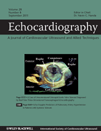Normotensive Male Offspring of Essential Hypertensive Parents Show Early Changes in Left Ventricular Geometry Independent of Blood Pressure
Abstract
For the purpose of detecting early left ventricle (LV) abnormalities in normotensive offspring of hypertensive parents (EH+), 23 normotensive sedentary male EH+ (age 25 ± 3 years) and 20 matched offspring of normotensive families (EH–), underwent: clinic bloop pressure (BP) measurement, 24-hour ambulatory BP monitoring (ABPM), frequency-domain parameters of autonomic heart rate control and conventional and Doppler tissue echocardiographic (DTE) study of both ventricles, including relative wall thickness (RWT) as an index of LV remodeling.
EH+ subjects had slightly higher office systolic and diastolic (P < 0.05), average 24-hour systolic (P < 0.001), diastolic (P < 0.01), and mean BP (P < 0.05). No between-group differences were detected for heart rate variability, LV mass and systolic and diastolic function in both ventricles. RWT was greater in EH+ (0.38 ± 0.05 vs. 0.34 ± 0.03 SD; P < 0.01), which was significantly related, at the univariate analysis, to the condition of EH+ (P < 0.004) and to the clinic and ambulatory BP parameters as well (P = 0.06–0.01). However, at the stepwise multiple regression analysis, with RWT used as the dependent variable, only the condition of EH+ was independently associated with RWT (P < 0.008), whereas BP did not. RWT, according to receiver operating characteristic curves analysis, predicted the condition of EH+ (cutoff point 0.369, specificity 90%, sensitivity 65%). Our data suggest that an higher RWT, as an index towards LV concentric remodeling, is the earliest change in LV geometry in EH+ subjects, independent of any slight elevation in BP. Thus, RWT measurement may be a quite specific tool to detect early LV alterations due to the condition of EH+. (Echocardiography 2011;28:821-828)




